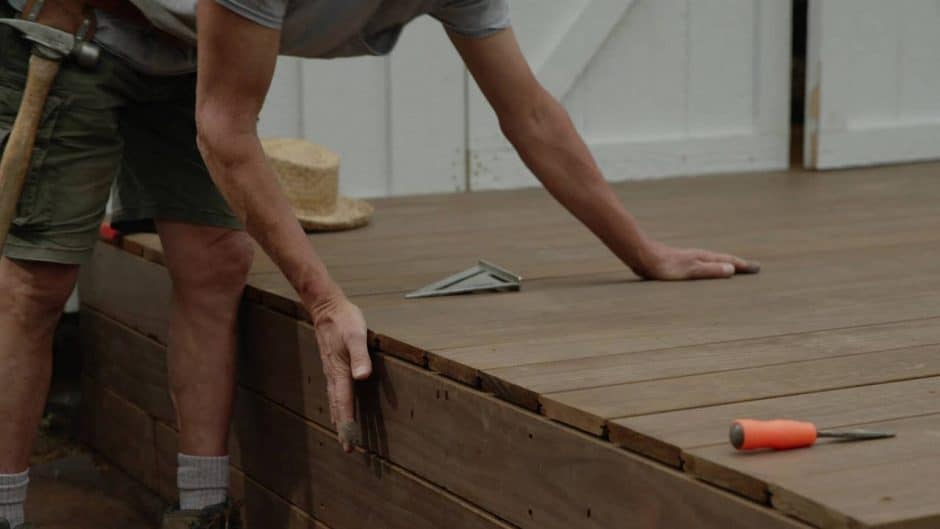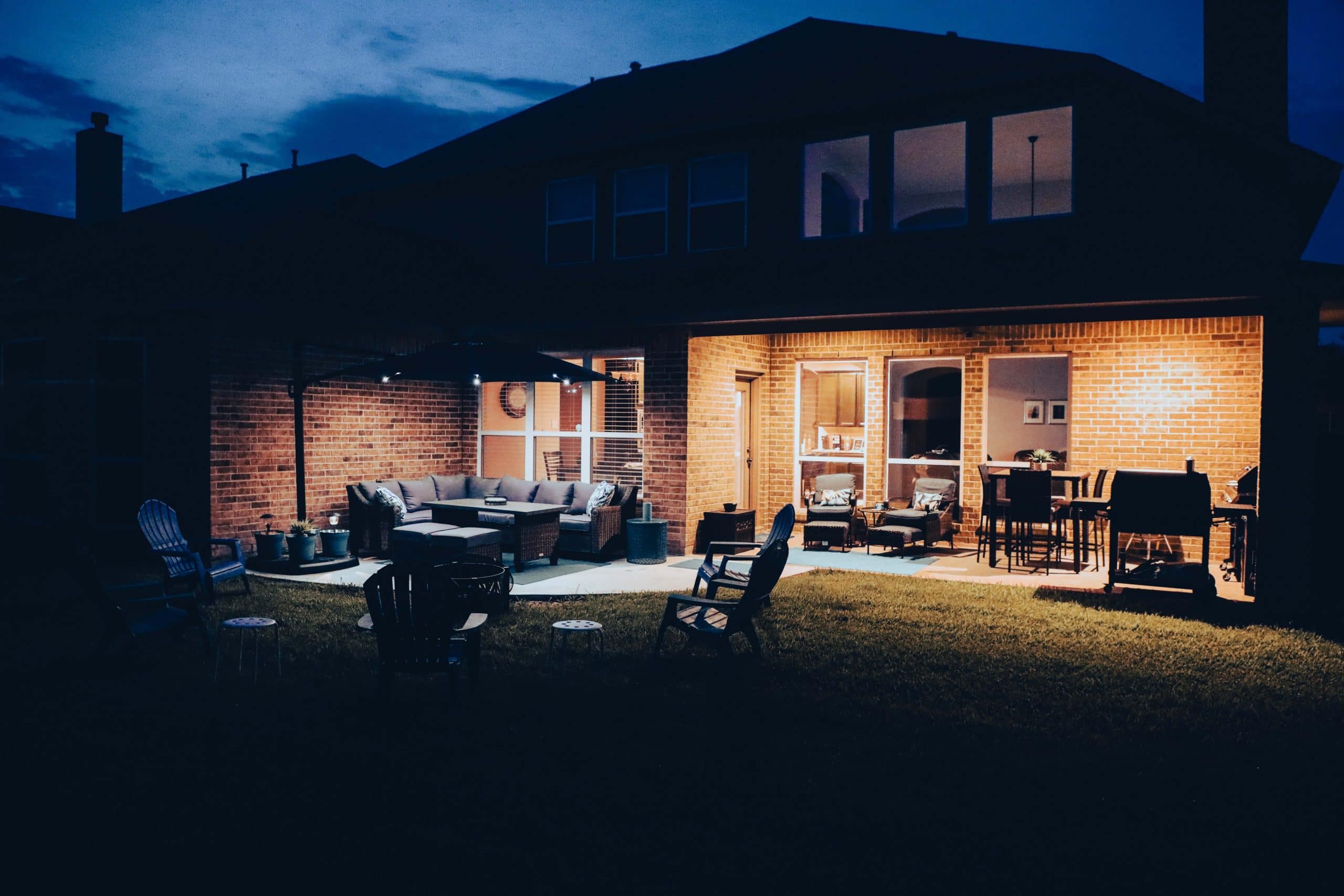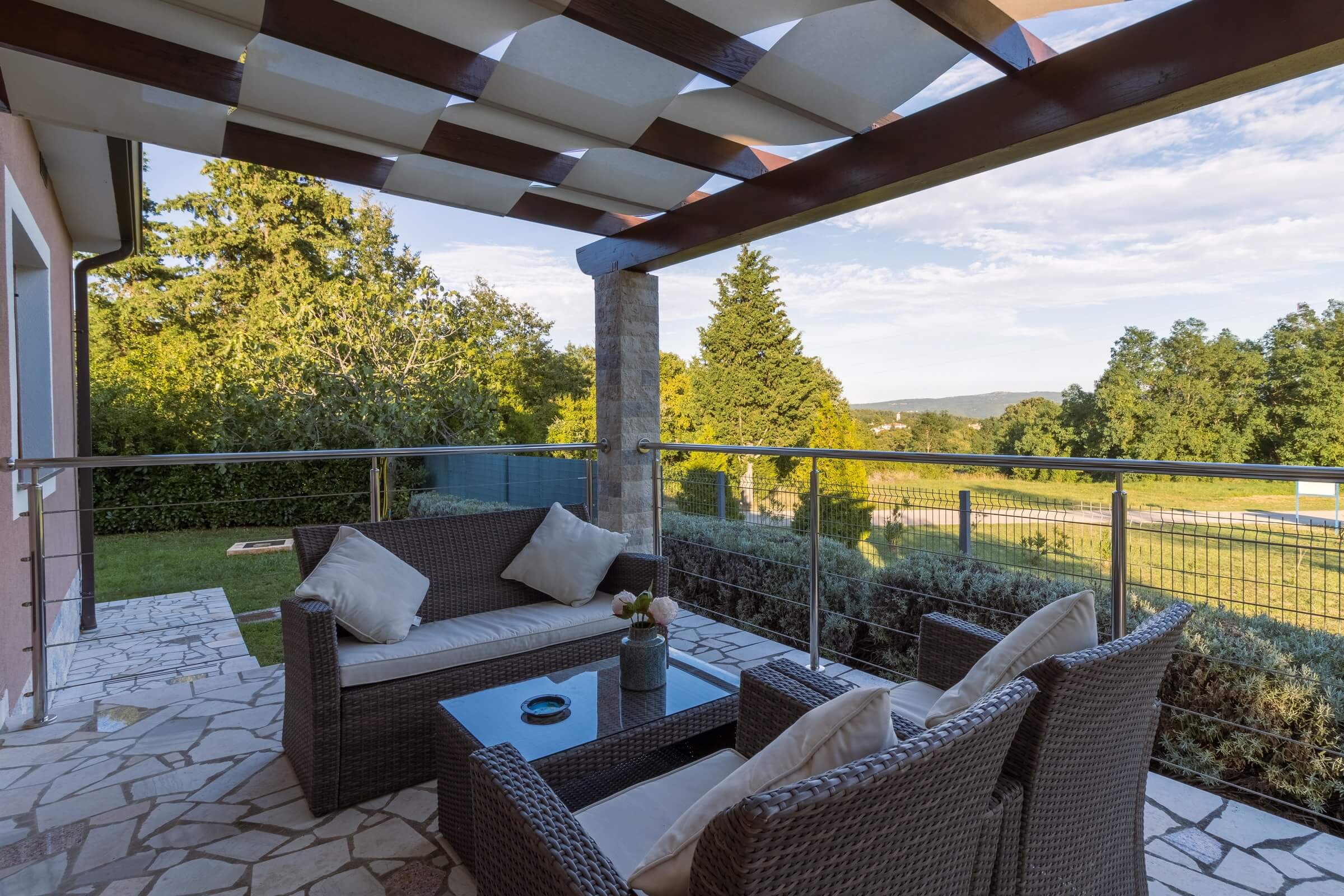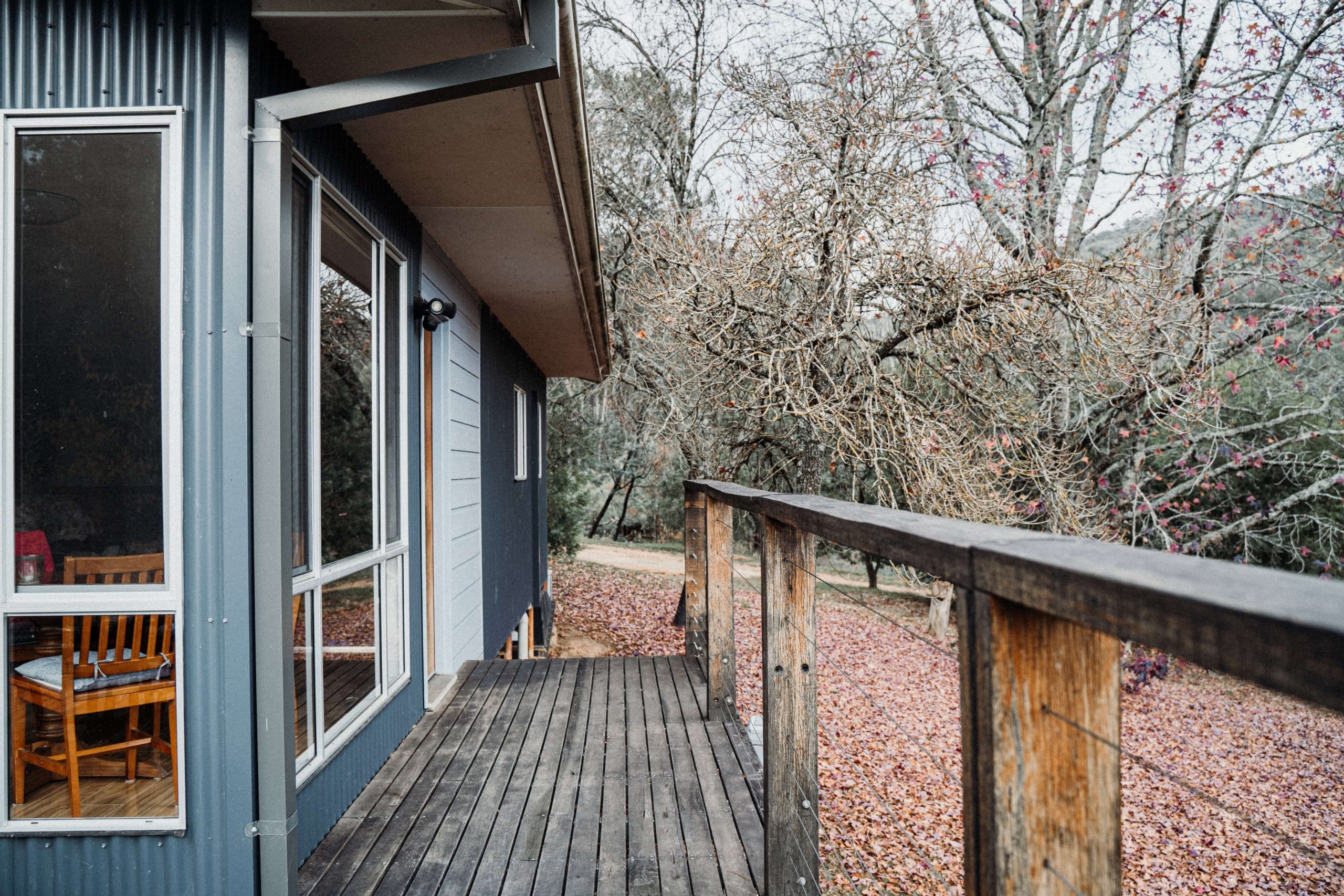
Some clients have a clear vision of their ideal outdoor living space, but others may need some direction. As a contractor, it’s helpful to understand and be able to communicate the differences between a deck versus a patio. Not only are the aesthetics different, but things like cost, maintenance, and lifespan also vary.
What is a deck?
A deck is an outdoor platform without a roof. You can build a deck in one of two ways: either as a freestanding deck or a ledger-framed deck. As its name implies, a freestanding deck isn’t attached to the home or other structure. A ledger deck attaches to the home with ledger board.
A deck often provides a view, while a patio is better suited to creating a sense of privacy in your client’s outdoor space.

What is a patio?
A patio is constructed on the ground, generally featuring some type of paver, concrete, or gravel. A patio is flush to the ground rather than being on a raised platform. Once the ground is level, you build a foundation made of either concrete or sand and pebbles. From there, the patio is constructed out of the client’s choice material such as stones, pavers, or gravel.

Decks vs. patios: Building & maintenance
There are many variables that set decks apart from patios. Here’s an overview to guide your clients through the decision-making process.
Cost to build
Size and materials have a big impact on the average cost to build a deck or patio. Patios cost less in most cases because there are fewer structural requirements in building a patio, and you can typically avoid permits and the fees that come with them. However, those costs may rise if the client’s yard has uneven ground since the area must be leveled before adding any pavers.
Deck costs vary greatly depending on the materials used. Most decks are framed out of wood, but can vary greatly in price depending on the finish materials used for decking and railing. Pressure treated wood is the economic choice, but many clients prefer the low maintenance and appearance of premium wood, wood/plastic, or plastic decking.
Permitting requirements
Most decks require a permit before construction begins. The exact specifications vary by local building codes. In most cases, any deck above 30 inches off the ground or attached to a structure requires a permit and an inspection process.
Most jurisdictions do not require a permit for patios. Double check your local deck building codes to confirm local regulations.
Structural and terrain requirements
Patios don’t have weight restrictions, while decks do. Not only do you need to account for the live load weight (people and their belongings, like chairs, portable grills, and plant pots), you may also need to account for the snow load if you live in an area with heavy snow in winter. This can impact the deck framing and footing design.
Terrain is not an issue when it comes to decks. Patios, on the other hand, must be flush with the ground. Depending on the slope of your client’s yard, there may need to be extensive grading work before installing a patio. This requires either heavy machinery or a lot of muscle and may involve subcontractors to help you get the job done.
Materials used

A patio can be built out of a variety of materials. Poured concrete is the cheapest and can be stamped to add character. Other popular options include brick, flagstone, concrete pavers, tile, and stone. You can also use loose material like pea gravel to create a patio.
Alternatively, your client can generally choose between wood decking and composite decking. Composite decks cost more upfront, but they may be the better choice for your client since they’re resistant to rot and insect damage.
Some clients have a clear vision of their ideal outdoor living space, but others may need some direction. As a contractor, it’s helpful to understand and be able to communicate the differences between a deck versus a patio. Not only are the aesthetics different, but things like cost, maintenance, and lifespan also vary.
What is a deck?
A deck is an outdoor platform without a roof. You can build a deck in one of two ways: either as a freestanding deck or a ledger-framed deck. As its name implies, a freestanding deck isn’t attached to the home or other structure. A ledger deck attaches to the home with ledger board.
A deck often provides a view, while a patio is better suited to creating a sense of privacy in your client’s outdoor space.

What is a patio?
A patio is constructed on the ground, generally featuring some type of paver, concrete, or gravel. A patio is flush to the ground rather than being on a raised platform. Once the ground is level, you build a foundation made of either concrete or sand and pebbles. From there, the patio is constructed out of the client’s choice material such as stones, pavers, or gravel.

Decks vs. patios: Building & maintenance
There are many variables that set decks apart from patios. Here’s an overview to guide your clients through the decision-making process.
Cost to build
Size and materials have a big impact on the average cost to build a deck or patio. Patios cost less in most cases because there are fewer structural requirements in building a patio, and you can typically avoid permits and the fees that come with them. However, those costs may rise if the client’s yard has uneven ground since the area must be leveled before adding any pavers.
Deck costs vary greatly depending on the materials used. Most decks are framed out of wood, but can vary greatly in price depending on the finish materials used for decking and railing. Pressure treated wood is the economic choice, but many clients prefer the low maintenance and appearance of premium wood, wood/plastic, or plastic decking.
Permitting requirements
Most decks require a permit before construction begins. The exact specifications vary by local building codes. In most cases, any deck above 30 inches off the ground or attached to a structure requires a permit and an inspection process.
Most jurisdictions do not require a permit for patios. Double check your local deck building codes to confirm local regulations.
Structural and terrain requirements
Patios don’t have weight restrictions, while decks do. Not only do you need to account for the live load weight (people and their belongings, like chairs, portable grills, and plant pots), you may also need to account for the snow load if you live in an area with heavy snow in winter. This can impact the deck framing and footing design.
Terrain is not an issue when it comes to decks. Patios, on the other hand, must be flush with the ground. Depending on the slope of your client’s yard, there may need to be extensive grading work before installing a patio. This requires either heavy machinery or a lot of muscle and may involve subcontractors to help you get the job done.
Materials used

A patio can be built out of a variety of materials. Poured concrete is the cheapest and can be stamped to add character. Other popular options include brick, flagstone, concrete pavers, tile, and stone. You can also use loose material like pea gravel to create a patio.
Alternatively, your client can generally choose between wood decking and composite decking. Composite decks cost more upfront, but they may be the better choice for your client since they’re resistant to rot and insect damage.
Materials include:
- Pressure treated wood decking
- Premium wood decking, including cedar, redwood, exotic hardwood, alternative treated premium wood like heat-treated and aceleated
- Wood/plastic composite
- Plastic (specifically cellular PVC, but also polyethylene and polypropylene materials).
Maintenance
All patios and decks require some type of upkeep, but the materials make a huge difference in just how much time and effort is required.
Patios should be rinsed off with mild soap every few months to avoid staining. For long-term preservation, your client can use a patio sealant every few years to keep the pavers or concrete looking clean for longer. Homeowners should also remember to replace any broken bricks or pavers as damage occurs. Patios with bricks or pavers may require a natural weed spray to keep unwanted plants from growing in the cracks.
Decks also require regular cleaning to keep them looking fresh. It’s important to clear the gaps between the boards to allow proper drainage. Wooden decks must be power washed and sealed every few years, and may also need boards replaced over time. Composite material requires less maintenance and lasts longer.
Lifespan

A patio typically has a longer lifespan than a deck. Patios can last for decades, especially if the homeowner keeps up routine maintenance.
Safety
It takes careful planning to build a safe deck. The International Residential Code has a substantial section on deck building to help contractors build a secure plan. The permit and inspection process are also designed to ensure the safety of the deck, since they are built above ground and must bear a substantial amount of weight. Patios are generally structurally safer than decks.
MT Copeland offers video-based online classes that give you a foundation in construction fundamentals with real-world applications, like how to build a freestanding deck.
Classes include professionally produced videos taught by practicing craftspeople, and supplementary downloads like quizzes, blueprints, and other materials to help you master the skills.






